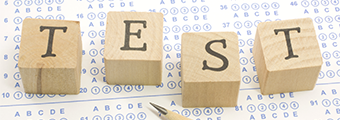EMDR to treat anxiety disorders
EMDR. Today, this therapy is becoming more and more popular due to its results. It is known to be very effective for anxiety disorders, anger management difficulties, phobias and post-traumatic stress.

What is EMDR?
Let’s start at the beginning. What does EMDR mean? It’s an acronym that stands for “Eye Movement Desensitization and reprocessing“. Because yes, in this therapy, we will use the movement of your eyes!
It’s a psychotherapy developed in 1987 by Francine Shapiro, a psychologist.
The aim of the therapy is to reduce and extinguish the emotional charge associated with a traumatic memory or an anxious memory. It is therefore a psycho-neuro-biological therapy based on sensory stimulation.
How does EMDR therapy work?
A therapy consists of 8 different phases.
- Phase 1: First of all, you and your therapist will get to know each other, this is the starting point of the therapy. The therapist will make sure that you can be part of the people who can benefit from EMDR. He or she will discuss the reason for your consultation, your life history… the aim being to be as precise as possible.
- Phase 2: This is used to establish a climate of trust. The therapist will take the time to explain to you what EMDR is, what bilateral stimulation is… This is the moment when you should not hesitate to ask your questions!
- Phase 3: This is the target assessment. You are going to identify the traumatic event or the first event where you felt anxiety in the context of your phobia. You must therefore detail this event as much as possible. What are the emotions and physical sensations that appear when you think about this event.
- Phase 4 to 7: Start of memory reprocessing. This means that the practitioner will begin to use alternating bilateral stimulation. This stage will directly enable a progressive desensitisation by reprocessing the memories, triggers or obstacles.
- Phase 8: This phase consists of checking the therapeutic effects of the various sessions. Based on this re-evaluation, the therapist will be able to adapt or add elements for the re-treatment.
The emergence of emotions can be intense when you are reliving the event but will quickly diminish. In addition, remember that the therapist is trained in this type of treatment and will be able to accompany you if the emotions become too intense.
When to use it?
It’s a therapy that can be used for different types of disorders: anxiety disorders, depression, all types of phobias, eating disorders, bereavement, chronic pain… It’s particularly recommended for traumatic situations (rape, attack, natural disaster…).
Undergoing EMDR therapy
-
Does it really work? Does it work on everyone?
Indeed, it is not recommended for people suffering from personality disorders, cardiac disorders
-
Who is trained in EMDR and where to get a therapy?
There are many EMDR training organisations in France. Anyone practising it has a diploma approved by EMDR France or Europe. Practitioners who may be oriented towards EMDR are psychiatrists, psychologists and psychotherapists.
-
How much does an EMDR session cost?
The price of a session varies depending on the therapist. Prices can range from 50 to 100 euros.
Is EMDR reimbursed?
The reimbursement depends mainly on the therapist who will perform the sessions. If your therapist is:
– A psychiatrist: Your sessions may be reimbursed.
– A psychologist: There is no reimbursement of sessions by the social security, however some mutual insurance companies reimburse a defined number of sessions
– Other therapists: No reimbursement from social security or mutual insurance companies
How long does an EMDR therapy session last?
A session can last from 1 to 2 hours. This time will vary according to the memory to be worked on. It can also be shorter for people with attentional difficulties or for children/adolescents. It is difficult to give a figure for the number of sessions needed. Indeed, it depends on the problems and traumas to be worked on. The first 2 to 3 sessions do not include EMDR, but allow you to get to know each other and to take stock of the reasons why you are seeking EMDR treatment. The number of sessions can vary from 2-3 sessions to about ten. Simple traumas (e.g. car accidents) will require fewer sessions than more complex traumas (e.g. repeated sexual abuse).
Can one practice EMDR alone?
Yes, self-EMDR can be practised at home for example. In order to get the best benefits from this practice, a small protocol must be followed:
- This first step consists of informing and training you in the practice. There are several possibilities: You can start by doing a few sessions with a therapist to understand this practice. Small training courses exist by EMDR professionals: These courses can be done online
- Find a calm and serene place in your home where you can practice EMDR
- Choose the right position to perform the exercises
- Sit on a chair, stool or on the floor. The aim is to be in a comfortable sitting position for you
- You can leave your legs crossed or stretched
- You can cross your arms and place your hands on your chest. This position will help you to do the tapping
- Make sure you have an acceptable heart rate. You can start by doing some cardiac coherence in order to find a stable heart rate
- You can start practising EMDR. As when you are accompanied by a therapist, you can immerse yourself again in the memory responsible for your anxiety. Immerse yourself completely in this memory, using your different senses: sight, sounds around you, physical sensations felt, smells and tastes in your mouth at that time. As soon as the memory begins to appear, you can move on to the next step.
- You can begin to clap your hands on your chest while moving your eyes from right to left.While doing this exercise, pay attention to the sounds made by the clapping of your hands on your chest.
- Then, as you continue to clap your hands, move your eyes, and focus your attention on the sounds you are making, you can begin to think of positive memories and let these memories gradually take over.
- Repeat the exercise as many times as necessary


